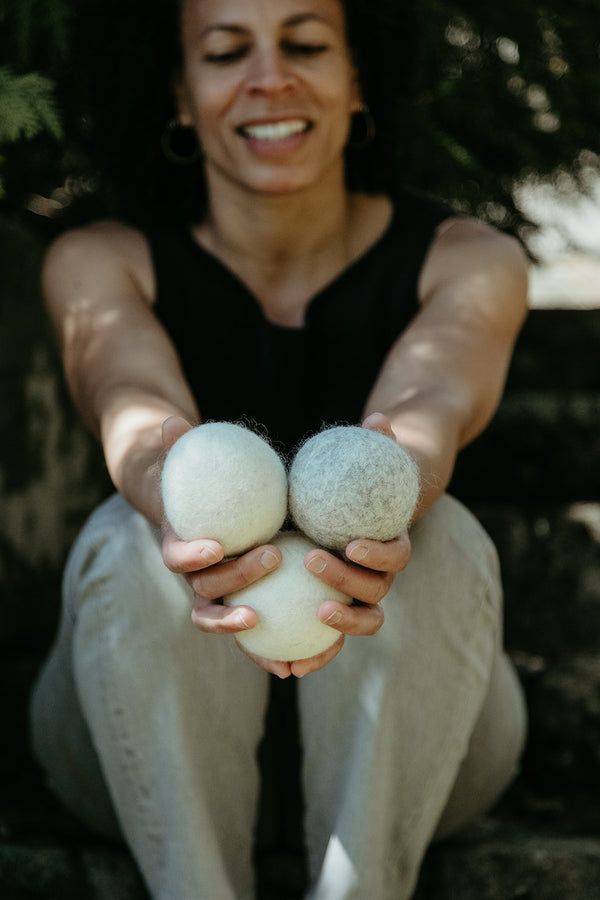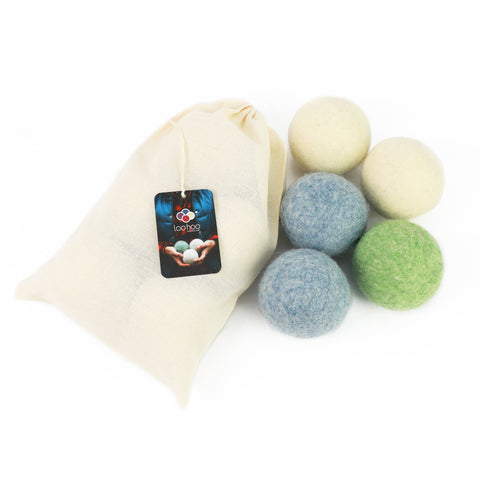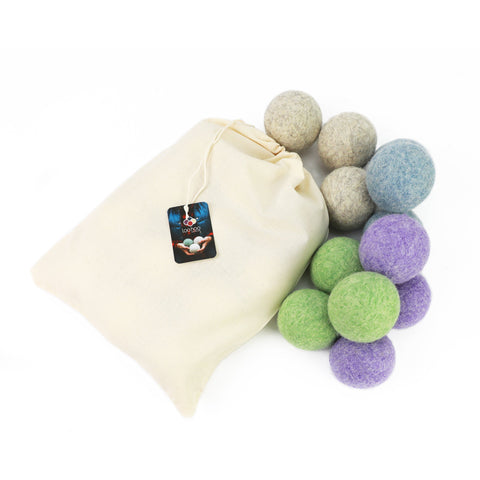Your Cart is Empty
Pick Your Perfect Pack
Pick Your Perfect Pack
How to Care for Wool & Down
October 24, 2023 4 min read

It’s the small things that alert us that a new season has arrived. Some notice fallen acorns and tomatoes and a dusting of leaves, while others take note of the morning dew and shorter days.
Like a seasonal ritual, many of us have begun the transition in our closets. Bathing suits and sundresses are tucked away and out comes our comfort textiles—wool sweaters, thick blankets and down comforters.
And after several months in storage, these items could use some freshening up. While air drying is the primary recommendation, sometimes blankets and sweaters need a wash before wear. Just remember: Wool may be sturdy but it requires careful laundering to prevent shrinking and stretching during the laundry process.
Check out these tips for taking the musty out of cold weather must-haves.

Wool Sweaters & Blankets
Since wool is stain and odor resistant, less washing than other fabrics is required. To get ready for a season of use, either machine washing or washing by hand will do the trick.
Machine washing is easy and safe, and yes, you can avoid shrinkage by keeping a few things in mind. Prior to washing wool sweaters, be sure to remove any items from the pockets. According to The Woolmark Company, a global authority on wool, wool garments should be turned inside out and washed on a wool setting or the cold water or delicate wash cycle to help retain the item’s look and feel.
When washing wool blankets or garments, use a mild detergent and flat dry after washing. Remember that heat, whether it’s water or the dryer, can shrink wool. Experts recommend air drying away from sunlight to avoid fading and developing a coarse texture.
Once dry, hang your item on a padded hanger or fold gently to retain its shape. Close zippers, secure all buttons and store either hanging up or enclosed in a cotton bag or sealed container in a dark, cool area. Throw in a few cedar wood balls or chips to help prevent moths and other unwanted insects that feed on wool.
Keep your wool free of stains including perspiration and other bodily fluids that can provide nutrients clothes moths need, such as vitamin B and salt. To spot treat, blot stain with a mild detergent and paper towel or clean cloth. For red wine or beer, use a mixture of three parts cold water, one part rubbing alcohol; oily or greasy stains can be treated by covering the area with cornstarch for 30 minutes then brushed with a clean cloth; for coffee, combine equal parts rubbing alcohol and white vinegar. If the label reads Dry Clean Only, leave it to the professionals.
To retain color and avoid bleeding, separate dark and light colors prior to and after laundering. Avoid fabric softeners (use LooHoos instead, after all, they are made with wool!) to prevent pilling. If your item has those pesky little balls, simply pluck them off. When there’s more than a few, gently run a comb across the area to remove.

Down Comforters
Good news is not all down comforters and duvet inserts need to be dry cleaned. If yours has an outer cover that is all-cotton or a cotton-synthetic blend, you can machine wash it on a gentle cycle in warm water and avoid shrinkage.
Duvet covers can be washed separately, in fact, it’s recommended to avoid overloading your machine. Prior to washing your down comforter, shake it out to ensure an even washing. Most washers can handle twin and full comforters; queen- and king-size require extra-large capacity, front-loading washers and dryers.
To prevent fabric from bunching up—which could lead to a machine malfunction—stuff two light-colored socks with an old LooHoo past its prime in each and add to the load. This will also ensure a thorough washing.
Laundry experts suggest adding just half the regular amount of detergent to minimize soap residue and also, skip the bleach. Set the washer on gentle or delicate cycle with warm water and if you notice suds when the cycle ends, run the item through a second rinse cycle.
To dry, spread out your comforter and throw in four to six LooHoos to ensure an even dry using the lowest heat setting. Every 30 to 40 minutes remove the comforter, shake it out and return to the dryer. This can take three or more hours; just be sure not to overdry.
In between washes, the folks at California-based Puredown sustainable bedding suggest shaking your down comforter regularly to redistribute the down. For added fluff, toss your comforter in the dryer for a few minutes on a no-heat and air-dry setting with a few LooHoos. Also, refresh your comforter by laying it on a flat surface in the sunlight for a few hours, which helps eliminate odors and gives your duvet a crisp feel.
Related Products
Subscribe
Sign up to get the latest on sales, new releases and more …

Join the LooHoo Community
Sign Up Now to be the first to learn about new products, sales and giveaways.



